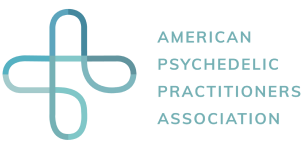Ketamine is a medication that has gained attention for its potential therapeutic uses in recent years. One common question that arises when considering ketamine as a medicine is whether it can cause hallucinations or visual distortions. In order to address this concern, it is important to understand the science behind ketamine and its effects on the brain.
Understanding Ketamine: A Comprehensive Overview
The History and Development of Ketamine
The history of ketamine dates back to its discovery by Dr. Calvin Stevens, a brilliant scientist working for the pharmaceutical company Parke-Davis. Initially, it was primarily used as a veterinary anesthetic due to its rapid onset and short duration of action. However, further research led to the recognition of its potential therapeutic effects in humans.
In the early 1970s, ketamine gained popularity as a recreational drug due to its mind-altering effects. It became a staple in the underground party scene, where users sought its dissociative properties and hallucinogenic experiences. This recreational use raised concerns about the drug’s potential for abuse and addiction.
Despite its recreational use, ketamine continued to be studied for its medical applications. Researchers discovered that ketamine not only provided effective anesthesia but also had unique antidepressant and analgesic properties. This groundbreaking discovery opened up a new realm of possibilities for ketamine in the field of medicine.
Ketamine’s Role in Modern Medicine
In modern medicine, ketamine is often utilized for its anesthetic and analgesic properties. It is commonly used in emergency rooms and operating theaters to induce anesthesia quickly and safely. Its ability to provide profound pain relief makes it an invaluable tool for surgeons and medical professionals.
However, ketamine’s potential extends far beyond anesthesia and pain management. Over the years, researchers have explored its therapeutic effects in various psychiatric conditions. Studies have shown promising results in the use of ketamine for the treatment of depression, particularly in individuals who have not responded to traditional antidepressant medications.
Furthermore, ketamine has shown remarkable efficacy in managing treatment-resistant depression, a condition where individuals do not experience relief from depressive symptoms despite trying multiple treatment options. The rapid onset of ketamine’s antidepressant effects has made it a game-changer in the field of psychiatry.
Additionally, ketamine has demonstrated potential in the treatment of post-traumatic stress disorder (PTSD). PTSD is a debilitating condition that affects individuals who have experienced traumatic events. Ketamine’s ability to modulate certain brain pathways involved in fear and memory processing may offer relief to those suffering from the debilitating symptoms of PTSD.
As research into ketamine continues, scientists are exploring its potential in other psychiatric conditions, such as bipolar disorder and obsessive-compulsive disorder (OCD). The unique mechanism of action of ketamine sets it apart from traditional antidepressant medications, offering hope for individuals who have not found relief through conventional treatments.
The Science Behind Ketamine and Hallucinations
How Ketamine Interacts with the Brain
Ketamine works by blocking certain receptors in the brain, specifically the N-methyl-D-aspartate (NMDA) receptors. This blockade results in a disruption of the normal functioning of the neurotransmitter glutamate, which plays a crucial role in various cognitive processes.
Glutamate is the most abundant excitatory neurotransmitter in the brain, responsible for facilitating communication between neurons. By blocking NMDA receptors, ketamine interferes with the transmission of glutamate, leading to a disruption in the brain’s normal signaling pathways.
It is believed that this disruption of glutamate transmission is what contributes to the altered perception experienced by some individuals who use ketamine. However, these effects are highly dose-dependent and vary from person to person.
At lower doses, ketamine can induce a dream-like state known as “dissociation,” where individuals may feel detached from their bodies or experience a sense of floating. These experiences can be accompanied by visual distortions, such as changes in color perception or the perception of objects appearing larger or smaller than they actually are.
At higher doses, ketamine can induce more intense hallucinations, where individuals may have vivid and immersive visual experiences, often described as “trips. ” These hallucinations can range from abstract patterns and shapes to complex scenes and landscapes.
The Link Between Ketamine and Visual Distortions
While ketamine can cause perceptual changes, including visual distortions, it is essential to differentiate between hallucinations and the therapeutic use of ketamine. In a controlled medical setting, ketamine is administered under the supervision of trained professionals who carefully monitor the dosage to ensure the desired effects.
When used medicinally, ketamine is not intended to induce hallucinations but rather to provide relief from certain symptoms or conditions. It is administered at lower doses than those typically associated with recreational use, reducing the likelihood of experiencing visual distortions.
Research has shown that ketamine has potential therapeutic benefits for conditions such as treatment-resistant depression, post-traumatic stress disorder (PTSD), and chronic pain. In these cases, the focus is on the antidepressant and analgesic effects of ketamine rather than its hallucinogenic properties.
However, it is important to note that the mechanisms underlying the therapeutic effects of ketamine are not fully understood. Researchers believe that ketamine’s ability to rapidly increase synaptic connections in the brain, particularly in areas involved in mood regulation and pain perception, may contribute to its therapeutic benefits.
Furthermore, ongoing research is exploring the use of ketamine in combination with psychotherapy to enhance its therapeutic effects. The integration of ketamine-assisted therapy aims to provide a supportive and transformative experience for individuals seeking relief from mental health conditions.
The Medical Use of Ketamine: Risks and Benefits
The Therapeutic Potential of Ketamine
Research has shown promising results regarding the therapeutic potential of ketamine. For instance, studies have demonstrated its rapid and robust antidepressant effects in individuals with treatment-resistant depression.
In addition, ketamine has shown promise in managing chronic pain conditions and reducing symptoms of PTSD. These findings highlight the potential benefits that ketamine may offer as an alternative treatment option for individuals who have not responded well to traditional therapies.
Possible Side Effects and Risks of Ketamine Use
While the potential benefits of ketamine are significant, it is crucial to consider the potential side effects and risks associated with its use. Common side effects can include dizziness, nausea, increased heart rate, and transient increase in blood pressure.
Furthermore, as ketamine has the potential for abuse and addiction, it is critical to strictly adhere to medical guidance and not use it recreationally. Regular assessments and monitoring by healthcare professionals can help mitigate these risks.
Addressing Common Concerns About Ketamine Treatment
Debunking Myths About Ketamine
One common misconception about ketamine is that it always induces hallucinations or visual distortions. As mentioned earlier, ketamine is administered at lower doses in medical settings and is not intended to cause hallucinations. The dosage and supervision provided during treatment aim to ensure safe and effective outcomes.
What to Expect During a Ketamine Treatment
During a ketamine treatment session, individuals can expect a calming and relaxing atmosphere. Trained healthcare professionals will closely monitor and adjust the dosage, ensuring the desired therapeutic effects are achieved while minimizing the risk of perceptual changes or hallucinations.
It is important for individuals to communicate their experience and any concerns they may have during the treatment process. This open dialogue with healthcare professionals can help address any anxieties or uncertainties about the treatment.
Preparing for Ketamine Treatment: A Guide
Pre-Treatment Considerations and Precautions
Prior to receiving ketamine treatment, it is vital to consult with a healthcare professional experienced in ketamine therapy. They will evaluate your medical history and assess your suitability for the treatment.
Additionally, it is advisable to discuss any medications or supplements you are currently taking, as certain substances may interact with ketamine. Following any pre-treatment instructions provided by your healthcare professional will help ensure a smooth and successful treatment experience.
Post-Treatment Care and Follow-up
After completing a ketamine treatment session, it is essential to follow any post-treatment care instructions provided by your healthcare professional. This may include refraining from certain activities or medications for a specified period to ensure optimal recovery and minimize risks.
Regular follow-up appointments with your healthcare professional are crucial to monitor your progress, address any concerns, and determine the need for further treatments or adjustments to your treatment plan.
Parting Thoughts
In conclusion, while ketamine treatment can result in perceptual changes at higher doses, when used properly in a medical setting, the likelihood of experiencing hallucinations or visual distortions is significantly reduced. Proper understanding, open communication with healthcare professionals, and adherence to medical guidance are key to ensuring safe and beneficial ketamine treatment experiences.
To learn if ketamine treatment is the right therapy option for you, reach out to Waybridge today to schedule a mental health consultation.




